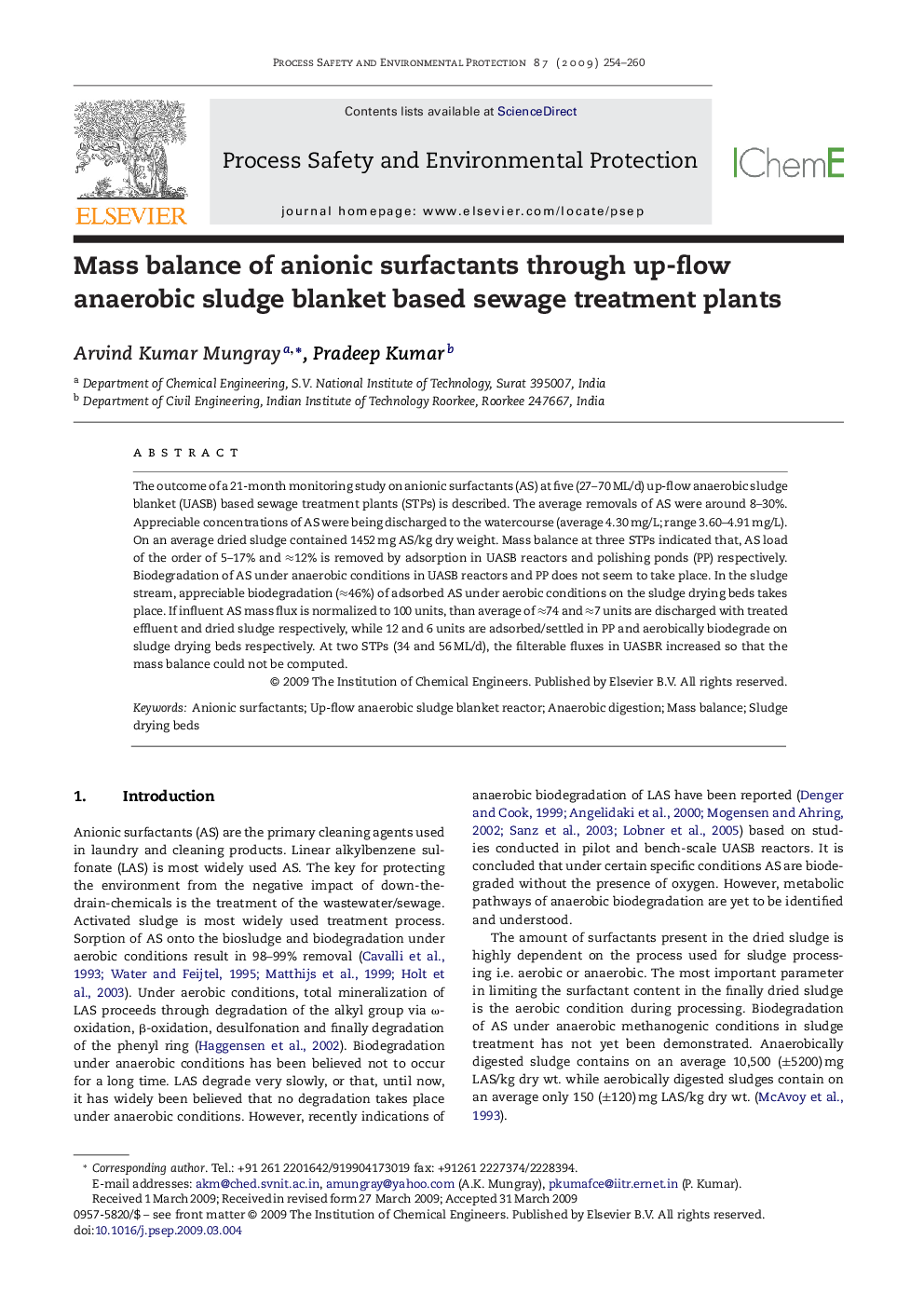| Article ID | Journal | Published Year | Pages | File Type |
|---|---|---|---|---|
| 588837 | Process Safety and Environmental Protection | 2009 | 7 Pages |
The outcome of a 21-month monitoring study on anionic surfactants (AS) at five (27–70 ML/d) up-flow anaerobic sludge blanket (UASB) based sewage treatment plants (STPs) is described. The average removals of AS were around 8–30%. Appreciable concentrations of AS were being discharged to the watercourse (average 4.30 mg/L; range 3.60–4.91 mg/L). On an average dried sludge contained 1452 mg AS/kg dry weight. Mass balance at three STPs indicated that, AS load of the order of 5–17% and ≈12% is removed by adsorption in UASB reactors and polishing ponds (PP) respectively. Biodegradation of AS under anaerobic conditions in UASB reactors and PP does not seem to take place. In the sludge stream, appreciable biodegradation (≈46%) of adsorbed AS under aerobic conditions on the sludge drying beds takes place. If influent AS mass flux is normalized to 100 units, than average of ≈74 and ≈7 units are discharged with treated effluent and dried sludge respectively, while 12 and 6 units are adsorbed/settled in PP and aerobically biodegrade on sludge drying beds respectively. At two STPs (34 and 56 ML/d), the filterable fluxes in UASBR increased so that the mass balance could not be computed.
